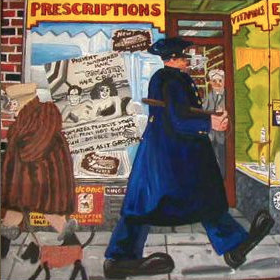

Our Approach
About the Oakleigh Collection
The Oakleigh Collection, presented here on this website, represents an important segment of art history, American Figurative Expressionism, from the early 1960s to the present. After 37 years of collecting, there are now over 329 objects, including major sized oil painting, sculptures, and drawings. This group of 40 American artists have, with a few exceptions, been woefully overlooked. Yet they have persevered through all phases of the last four decades. Their importance must be permanently recorded in history, as they have continued a figurative strain of German Expressionism in the United States. These artists and sculptors have retained originality in the face of conformity and have masterfully recorded the angst, violence, and happenings of these most turbulent times.
Our Story
The Beginnings of the Oakleigh Collection
An art history course given at Brown University by Dr. Alexander Dorner, author of “The Way Beyond Art”, left a lasting impression on the principal founder of the Oakleigh Collection. Dorner taught that great art was dynamic and required the viewer to participate. It also followed that great artists tend to associate with each other, socializing and exchanging ideas. The Oakleigh Collection is based on these principles, and as each artist as a chosen, he or she was specifically asked to recommend a friend. Th catalogue for the Lester Johnson exhibition at the Provincetown Art Association and Museum was funded in part with a grant from the Oakleigh Collection.
Figurative work is our cornerstone, is about all of us and is an important part of art history. The Oakleigh Collection is proud to have assembled many of these works and currently plans to publish a major catalogue and arrange a traveling show of approximately 80 paintings, starting at various museums through the country and ending at the Metropolitan Museum in New York. When the late Meyer Schapiro heard about the project, he said, “It should start at the Met!” At present three museums have indicated they wish to participate.
Several artists from this group have been given one man shows at various universities and museums. In the fall of 1999, the Whitney Museum in New York City did a major retrospective, an important African American figurative artist from the 60s. They chose the paintings “Abundance and the Four Elements” which the Oakleigh Collection loans to the exhibit, to be reproduced as their feature postcard for this exhibition.
We have an advisory board, several consultants, and an accredited art conservator. Presently, we seek all interested directors, curators, art historians, and scholars who wish to assist in planning a major exhibition and catalogue. The leaders of this effort should share a kindred perception and appreciation of this group of figurative expressionists. This level of enthusiasm will help establish a meaningful place in art history for these artists.